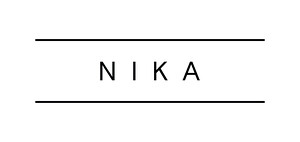November 3–December 21, 2024
43 Rue de la Commune de Paris
P.O. Box 93230, Romainville
Paris
France
Artists: Gegee Ayurzana, Nazilya Nagimova, Adrian Pepe, Nomin Zezegmaa.
Featuring artists who use traditional craft techniques to explore themes of memory and identity.
Nonlocality is a concept often associated with quantum physics, referring to the idea that objects or phenomena can be connected and influence each other without being physically close, transcending the limitations of space and time. In the context of the new group show at NIKA Project Space Paris, nonlocality serves as a metaphor for the way artists engage with cultural memory, traditional crafts, and identity, reaching across time and geography.
By exploring the interaction between nature and humans, the artists are not confined to a single cultural or geographical space but instead invoke a fluid connection between their heritage and contemporary concerns. This nonlocality mirrors the diasporic and nomadic histories many of these cultures share, where movement, migration, and cross-cultural influences shape a continuous, living tradition.
The exhibition features artists from Mongolia, Tatarstan (Russia) and Lebanon who use felt, wool, and traditional craft techniques as their primary materials to explore themes of memory and identity. By deeply engaging with the traditional techniques of their local cultures and ancestors, each artist addresses the interaction between nature and humans. Animism becomes an important part of almost any southern or nomadic culture, simultaneously raising important ecological issues and concerns.
Inspired by the ancient nomadic past of the Tatars, Nazilya Nagimova turns to wool, a traditional material of her Tatar ancestors. Nomin Zezegmaa combines material craft techniques with questions of Mongolian shamanism and cosmology. Likewise, Adrian Pepe, who works with the wool of Awassi sheep, the most popular and ancient sheep breed in the Middle East, references the legend of Babylon as the capital of weaving. For Adrian Pepe, wool, with its changing shades from ochre to chestnut, not only celebrates ancient craft traditions but also creates a deep connection with the earth, where the material becomes a blank canvas on which symbolism, myths, and emotions come to life. Gegee Ayurzana work focuses on paintings that break away from traditional frames, created on (semi) transparent veils that appear to float freely and without boundaries, challenging our perception of real and imagined spaces. The motifs in these forms draw inspiration from the imagery and materiality of traditional Mongolian folk culture. In general her practice offers a contemporary reflection on themes raised by radical modernist painting, particularly regarding the autonomy of art and its formal and symbolic significance.
The works in the show create a space where ancient mytho-epic images and contemporary concepts merge, opening new ways of understanding and interaction. This connectivity highlights the synthesis between the material (wool, felt, craft) and the immaterial (memory, myth, and identity), creating a space where the ancient and modern coexist, and where boundaries between art, craft, and history are blurred.





